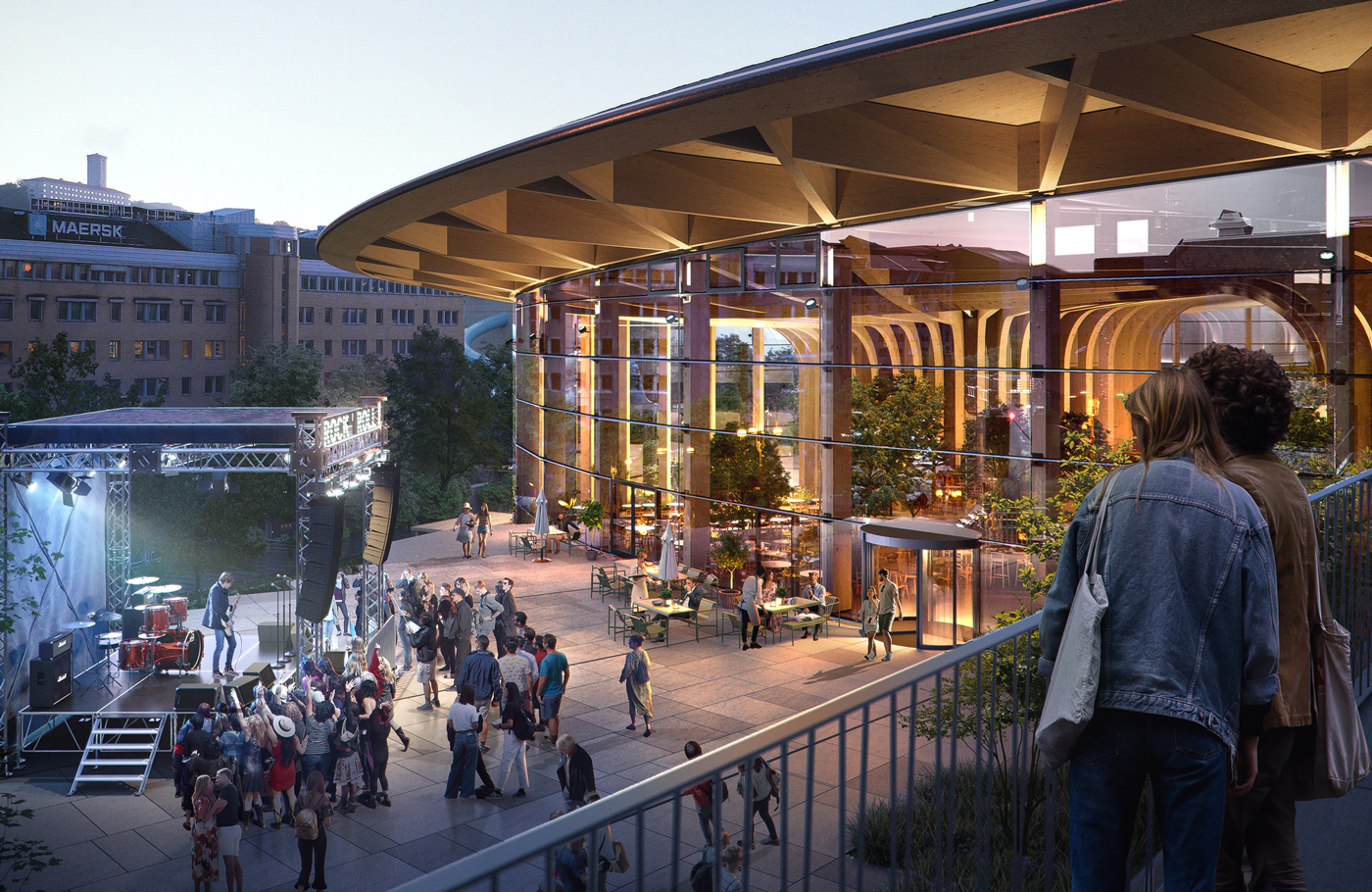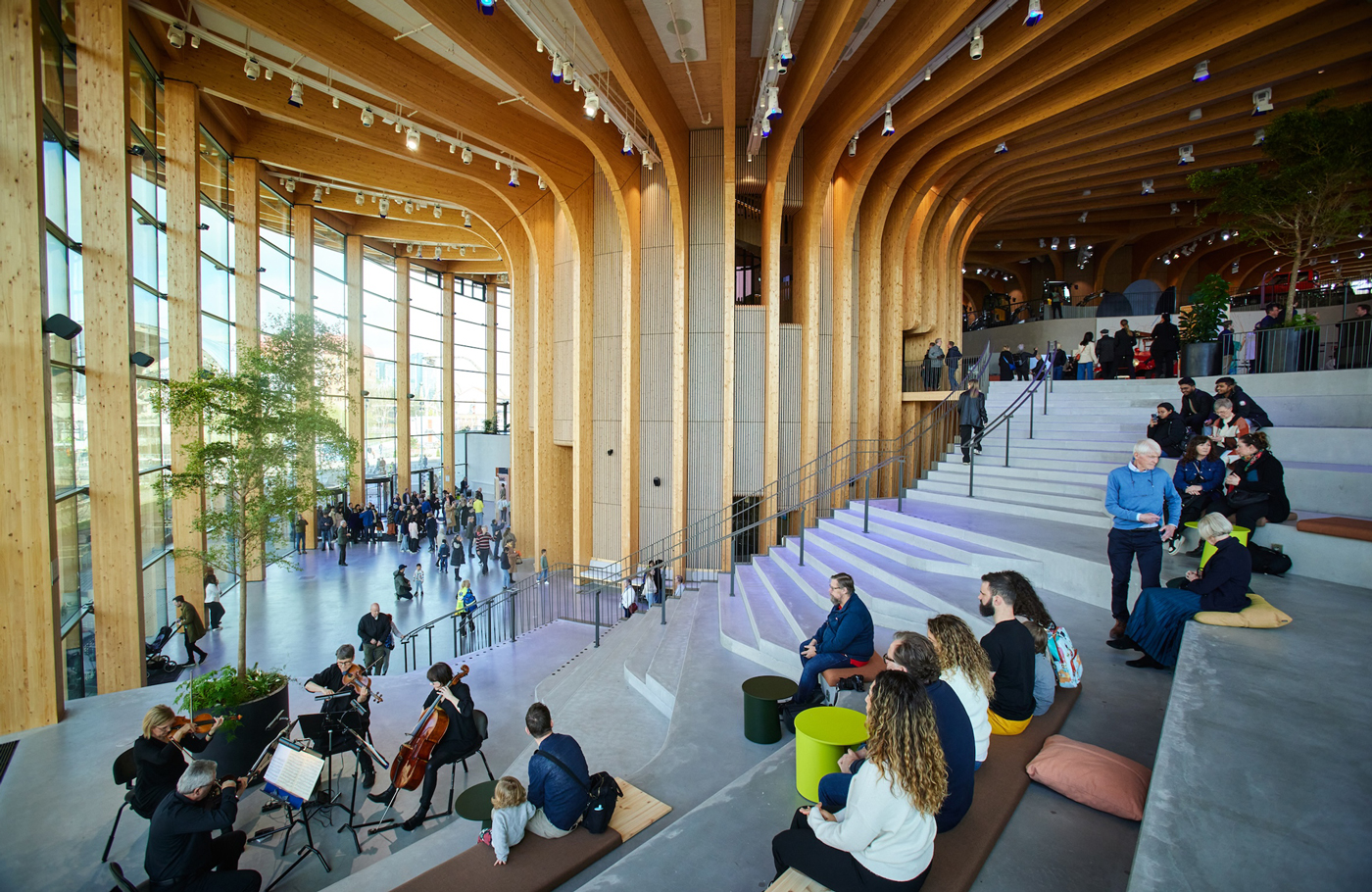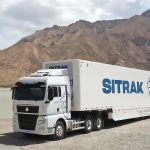Volvo Buses enters new e-mobility era
Volvo Buses enters new e-mobility era
In what may well be THE bus and coach story of the year, Volvo Buses has launched the BZR Electric: a global platform for city, intercity, and commuter operations. CHARLEEN CLARKE travelled to Gothenburg for the launch, which was held at the remarkable World of Volvo.
All the big guns were at the World of Volvo – and they came out with those guns blazing. Volvo Group CEO and president Martin Lundstedt was first up, and he noted that the group will have 100% fossil-free vehicles by 2040. “Battery electric will be the main act, but we will continue to invest in fuel cells and internal combustion engines powered by renewable fuels such as hydrogen,” he expanded.
Anna Westerberg, president of Volvo Buses, was equally upbeat in terms of the company’s sustainability aspirations. “We have a firm ambition to accelerate our efforts to meet the global demand for electromobility solutions. Therefore, it’s logical to extend our electromobility offering to include solutions for intercity, transit, and commuter operations,” she said. “The BZR Electric is a globally offered platform that we can adapt to the variety in requirements of customers worldwide. It’s another major step for us in our efforts to provide efficient and sustainable transport solutions – today and in the future.
“Electromobility is still a growing, fast-moving business, and at Volvo Buses we have gathered more than a decade of first-hand experience, together with customers and partners,” Westerberg continued. “With the launch of the Volvo BZR Electric, we’re convinced that we now have a product and a complete offer that will be a long-term solution for customers worldwide. It is the world’s most versatile e-mobility platform,” she enthused.
Of course, e-mobility is nothing new for Volvo. Its low-floor electric buses have been very successful; they are in daily operation in 25 countries. But this platform is all new. So, what’s on offer?
Introducing the new platform
The Volvo BZR Electric is a flexible platform that comes as high-floor or low-entry, in two or three-axle configurations, with a single or dual-motor driveline. It features a modular energy storage system where the number of batteries can be adjusted to match different types of operations, while the base chassis is adapted from the diesel B8 range. The Volvo BZR Electric is based on a Volvo Group common e-mobility architecture, meaning that major components and sub-systems are manufactured in large volumes. This is an advantage when it comes to spare parts commonality and logistics.
Built for future flexibility, the BZR platform is designed to enable versions for both Bus Rapid Transit (BRT) and, later on, coach applications. At launch, the platform accommodates lengths from 9.5 to 15m, a maximum weight of 27,000kg, and traction power up to 400kW (540hp). Initially, four to six
90-kWh batteries will be installed, allowing a maximum storage of 450kWh on two axles and 540kWh on three. Eight-battery installations will come later. The first vehicle to be built on this platform is the Volvo 8900 Electric.
Volvo senior executives would not be drawn on range, saying that there are simply too many potential factors (anything and everything from operating temperature to passenger numbers to speed – and more). Righthand drive will be available “fairly soon” and the platform could in future be used for fuel cells and internal combustion engines powered by hydrogen.
Safety is pivotal
Given the fact that it bears the Volvo name, it’s no surprise to discover that the platform comes with all of Volvo Buses’ active safety systems. These include several safety features with a special focus on protecting vulnerable road users. One example is the collision warning system, which not only reacts to vehicles (the legal requirement) but also to pedestrians and cyclists.
On this note, safety was – of course – one of the key topics during the launch event. “Taking responsibility is in Volvo’s DNA,” said Karin Svensson, chief sustainability officer of the Volvo Group. “As an industry, we have a big impact on society. We have a vision of zero accidents with our products and in our workplace. This is obviously a challenge; we need to do more, and we need to do it faster,” she urged.
Thomas Forsberg, head of safety at Volvo Buses, concurred. While the company is constantly working on new safety systems that use sensors, he pointed out that “the most sophisticated sensor in a bus is the eyes of the driver”. The company is, however, supporting drivers with a service that Volvo calls “Safety Zones”. A fairly simple yet super clever concept, Safety Zones helps the driver to comply with local regulations on noise, speed, and emissions, and the service is used in Volvo buses in approximately 20 countries.
Volvo Safety Zones is a refinement of geofencing technology, where Volvo’s engineers add intelligence and functionality to the vehicle. It is created in the Fleet Management user interface: fleet managers simply set the borders of a zone and the maximum speed they want to permit. Areas close to schools and public parks are obvious focal points, but so too are hazardous stretches of road. There is no limit to the number of Safety Zones that an operator can utilise.
By defining active low-speed zones, it is possible to ensure that the buses always keep to those speed limits. The driver is informed when entering the zone, and the vehicle automatically adjusts to the specified speed limit. Safety Zones can be used for both electromobility solutions and diesel buses. This safety feature is also a useful tool when it comes to protecting the reputation of a bus operator: if someone complains that a bus was speeding in a certain area, it’s possible to disprove the accusation because the driver cannot override the system.
Software code has doubled
Software and artificial intelligence (AI) were two other recurring themes. According to Goldman Sachs, the average lines of software code per vehicle doubled from 100 million in 2015 to 200 million in 2020, and Forsberg revealed that this trend will continue, saying: “If you printed the software in a modern vehicle (please don’t!) the pile of papers would be 225 metres high. By 2027, that pile will have grown to 2,250 metres!”
Given the fact that vehicles are now computers on wheels, cybersecurity is a massive concern. “Last year, there was a 30% global increase in attacks on fleet vehicles,” revealed Tomasz Werocy, cybersecurity compliance expert at Volvo.
On a more positive note, experts said AI was good news for the bus and coach sector, because it could pave the way to more efficient, sustainable, and passenger-centric transport. In theory, a future bus could even communicate with the transport operator and give suggestions on, for instance, how to improve a route. AI-powered buses could also help to reduce carbon emissions by optimising routes and minimising idling.
Yet another key topic during the event was collaboration; the theme of the event was “Today, Tomorrow, Together”. Over and over again, the speakers noted that all role players need to work together, pointing out that “many small steps in the right direction will make a huge difference”.
Westerberg concluded the event in a similar vein, stressing that the bus and coach sector needs to work together to shape the world we want to live in and that action is needed on the part of all parties. “Waiting is not an option,” she added. Judging by the Volvo experts’ presentations and the launch of the new platform, Volvo Buses is taking its own advice.
Volvo Buses launches Volvo 8900 Electric intercity bus
Volvo Buses has launched the 8900 Electric: an electric low-entry bus for city, intercity, and commuter operations. It is offered in both two- and three-axle configurations, to maximise the possibilities for efficient, sustainable, and profitable traffic for operators.
The diesel-powered Volvo 8900 has been in operation since 2010, and the new 8900 Electric platform builds on that success. “It’s logical to include electrified solutions for intercity, transit, and commuter operations. The 8900 Electric is a dedicated European offer and another major step in our efforts to provide efficient and sustainable people transport solutions,” says Thomas Nylund, head of Volvo Buses Europe.
The Volvo 8900 Electric offers a capacity of up to 110 passengers. The driveline can be specified with one or two motors, giving a traction power of up to 400kW (540hp). In combination with the modular battery arrangement of up to 540kWh, these options make the Volvo 8900 Electric suitable for most applications in extended city and intercity operations.
“In Europe, electromobility continues to grow, and at Volvo Buses we have gathered more than a decade of first-hand experience, together with customers and partners. With the launch of the Volvo 8900 Electric, we’re convinced that we now have a product and a complete offer that will be a long-term solution for customers,” says Nylund.
The Volvo 8900 Electric comes with several features that boost comfort and safety for the driver. A multi-function steering wheel and a dynamic instrument cluster provide a superior overview of important driver information, enhancing driver focus and control. “Safety and passenger satisfaction start with the driver,” Nylund emphasises, “and we also know that Volvo’s driver’s station is highly appreciated as a comfortable and rewarding workplace.”
The first versions of the Volvo 8900 Electric will be available in selected European markets during 2025. The body for the Volvo 8900 Electric will be manufactured by MCV.




World of Volvo opens this month
The venue for the launch of the new platform was the incredible new World of Volvo, which opens this month (April) in Gothenburg.
What a facility! World of Volvo is an experience centre, with a focus on the human body and mind, how we all are connected, and the design thinking of yesterday, today, and tomorrow. Temporary and permanent exhibitions, cultural events, talks, conferences, and food and drinks with a decidedly Nordic touch are all accommodated in the 22,000-m² building.
World of Volvo is an ultra-modern building consisting of over 2,800 tonnes of wood sourced from Sweden, Austria, and Germany, as well as massive glass panes. The awe-inspiring experience centre is a joint venture between Volvo Group and Volvo Cars.
Read more about the World of Volvo here.
Published by
Charleen Clarke
focusmagsa








